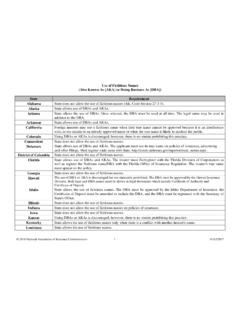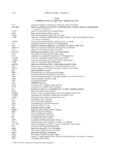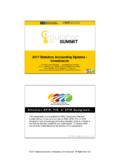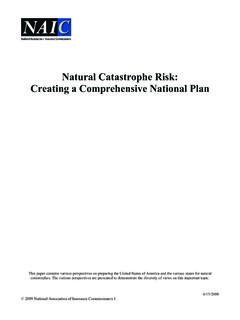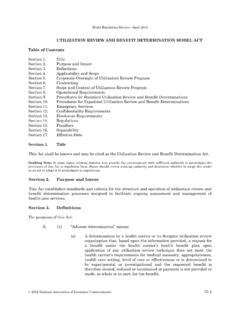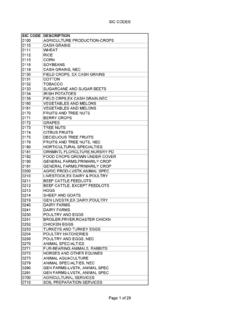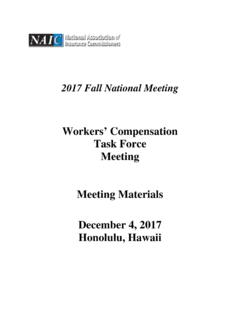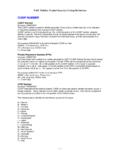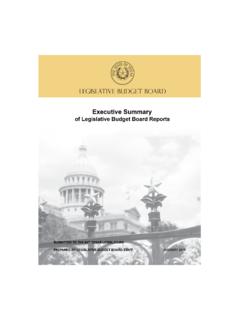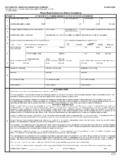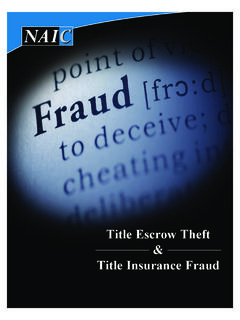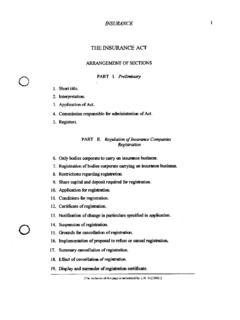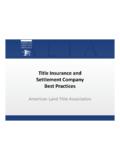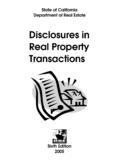Transcription of INSURANCE DATA SECURITY MODEL LAW Table of Contents …
1 MODEL Regulation Service 4th Quarter 2017 2017 National Association of INSURANCE Commissioners 668-1 INSURANCE data SECURITY MODEL LAW Table of Contents Section 1. Title Section 2. Purpose and Intent Section 3. Definitions Section 4. Information SECURITY Program Section 5. Investigation of a Cybersecurity Event Section 6. Notification of a Cybersecurity Event Section 7. Power of Commissioner Section 8. Confidentiality Section 9. Exceptions Section 10. Penalties Section 11. Rules and Regulations [OPTIONAL] Section 12.
2 Severability Section 13. Effective Date Section 1. Title This Act shall be known and may be cited as the INSURANCE data SECURITY Law. Section 2. Purpose and Intent A. The purpose and intent of this Act is to establish standards for data SECURITY and standards for the investigation of and notification to the Commissioner of a Cybersecurity Event applicable to Licensees, as defined in Section 3. B. This Act may not be construed to create or imply a private cause of action for violation of its provisions nor may it be construed to curtail a private cause of action which would otherwise exist in the absence of this Act.
3 Drafting Note: The drafters of this Act intend that if a Licensee, as defined in Section 3, is in compliance with Comp. Codes R. & Regs. , 500, Cybersecurity Requirements for Financial Services Companies, effective March 1, 2017, such Licensee is also in compliance with this Act. Section 3. Definitions As used in this Act, the following terms shall have these meanings: A. Authorized Individual means an individual known to and screened by the Licensee and determined to be necessary and appropriate to have access to the Nonpublic Information held by the Licensee and its Information Systems.
4 B. Commissioner means the chief INSURANCE regulatory official of the state. C. Consumer means an individual, including but not limited to applicants, policyholders, insureds, beneficiaries, claimants, and certificate holders who is a resident of this State and whose Nonpublic Information is in a Licensee s possession, custody, or control. D. Cybersecurity Event means an event resulting in unauthorized access to, disruption or misuse of, an Information System or information stored on such Information System.
5 The term Cybersecurity Event does not include the unauthorized acquisition of Encrypted Nonpublic Information if the encryption, process or key is not also acquired, released or used without authorization. Cybersecurity Event does not include an event with regard to which the Licensee has determined that the Nonpublic Information accessed by an unauthorized person has not been used or released and has been returned or destroyed. INSURANCE data SECURITY MODEL Law 668-2 2017 National Association of INSURANCE Commissioners E.
6 Department means the [insert name of INSURANCE regulatory body]. F. Encrypted means the transformation of data into a form which results in a low probability of assigning meaning without the use of a protective process or key. G. Information SECURITY Program means the administrative, technical, and physical safeguards that a Licensee uses to access, collect, distribute, process, protect, store, use, transmit, dispose of, or otherwise handle Nonpublic Information.
7 H. Information System means a discrete set of electronic information resources organized for the collection, processing, maintenance, use, sharing, dissemination or disposition of electronic information, as well as any specialized system such as industrial/process controls systems, telephone switching and private branch exchange systems, and environmental control systems. I. Licensee means any Person licensed, authorized to operate, or registered, or required to be licensed, authorized, or registered pursuant to the INSURANCE laws of this State but shall not include a purchasing group or a risk retention group chartered and licensed in a state other than this State or a Licensee that is acting as an assuming insurer that is domiciled in another state or jurisdiction.
8 J. Multi-Factor Authentication means authentication through verification of at least two of the following types of authentication factors: (1) Knowledge factors, such as a password; or (2) Possession factors, such as a token or text message on a mobile phone; or (3) Inherence factors, such as a biometric characteristic. K. Nonpublic Information means information that is not Publicly Available Information and is: (1) Business related information of a Licensee the tampering with which, or unauthorized disclosure, access or use of which, would cause a material adverse impact to the business, operations or SECURITY of the Licensee.
9 (2) Any information concerning a Consumer which because of name, number, personal mark, or other identifier can be used to identify such Consumer, in combination with any one or more of the following data elements: (a) Social SECURITY number, (b) Driver s license number or non-driver identification card number, (c) Account number, credit or debit card number, (d) Any SECURITY code, access code or password that would permit access to a Consumer s financial account, or (e) Biometric records.
10 (3) Any information or data , except age or gender, in any form or medium created by or derived from a health care provider or a Consumer and that relates to (a) The past, present or future physical, mental or behavioral health or condition of any Consumer or a member of the Consumer's family, (b) The provision of health care to any Consumer, or (c) Payment for the provision of health care to any Consumer. MODEL Regulation Service 4th Quarter 2017 2017 National Association of INSURANCE Commissioners 668-3 L.
